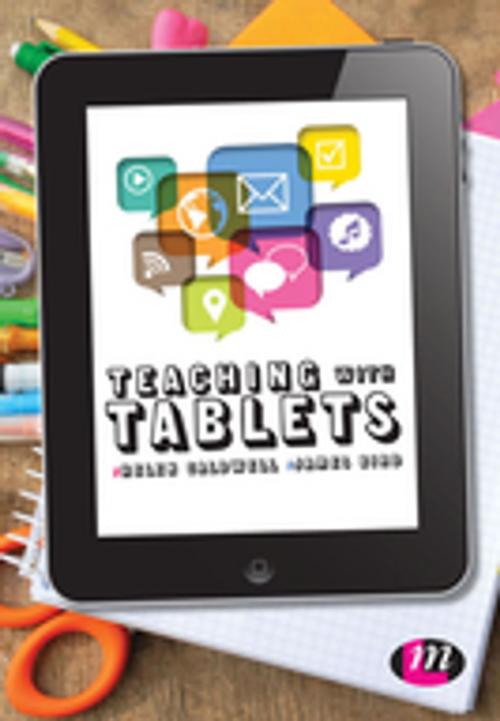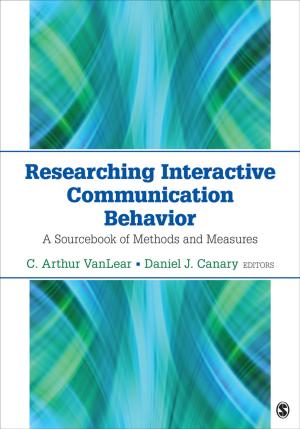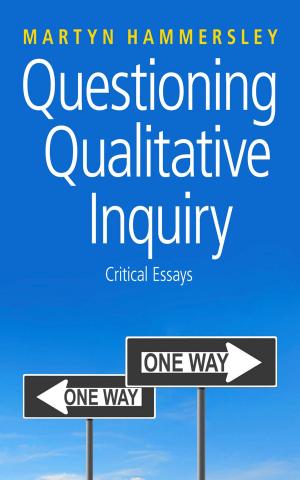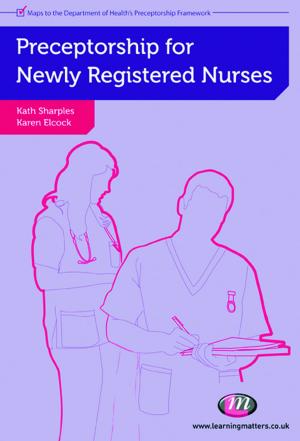| Author: | Ms. Helen Caldwell, James Bird | ISBN: | 9781473918702 |
| Publisher: | SAGE Publications | Publication: | March 19, 2015 |
| Imprint: | Learning Matters | Language: | English |
| Author: | Ms. Helen Caldwell, James Bird |
| ISBN: | 9781473918702 |
| Publisher: | SAGE Publications |
| Publication: | March 19, 2015 |
| Imprint: | Learning Matters |
| Language: | English |
The presence of handheld technologies in the classroom isn't enough - you need to know how to use them to enhance teaching and transform learning.
As more and more primary schools acquire devices such as iPads and tablets, it is becoming clear that adding them as a classroom resource is not enough. Teachers and trainees need strategies to integrate these into existing learning contexts in a meaningful way. Without this, these fantastic resources lose their value.
This book helps teachers to make the most of these devices in the primary classroom. It offers guidance on:
- how to use tablets to devise meaningful learning activities
- embed them in genuine curriculum contexts, drawing upon case studies from existing practice
It is written for non-specialists and explains technical terms in an accessible, practical way. Each chapter begins with a case study contributed by a teacher using tablets in schools. Real life examples and comments like this give the text a truly practical focus. Check out the book's Pinterest board which includes the apps mentioned in the book as well as a handy infographic for a snapshot guide on starting off your tablet teaching journey.
A note from the authors
The use of technology in schools continues to evolve rapidly as new devices and tools become available, and the adoption of mobile devices such as iPads and tablets has been a particularly exciting development in recent years. The benefits offered by these technologies, such as their portability, connectivity, accessibility and range of media, present new challenges and opportunities for teaching and learning. As the take up of tablets gathers pace in our schools there is a need for advice on the best approaches and apps to help achieve successful learning outcomes. Teachers need to find meaningful ways to integrate the devices into their own practice and to evaluate which of the many thousands of educational apps might be appropriate for their pupils.
This book considers how iPads and tablets can be used to enhance teaching and learning in primary schools. It is especially relevant in the light of the computing curriculum, which puts a new emphasis on children as makers and creators of digital content. Across other curriculum subjects too, the introduction of mobile devices that can be quickly and reliably accessed has precipitated a shift in practice. For example, they have enabled teachers and children to spontaneously pursue lines of inquiry, to connect, collaborate and publish in many different ways, and to use their digital skills to enhance their exploration of the physical world outside the classroom.
With these opportunities in mind, we offer anecdotes from the classroom and examples of how tablets might be embedded within current pedagogy and practice as a natural learning tool. Each chapter combines a practical case study with discussion of related pedagogy, and recommends apps to support a personalised, inclusive and active approach to teaching and learning.
The presence of handheld technologies in the classroom isn't enough - you need to know how to use them to enhance teaching and transform learning.
As more and more primary schools acquire devices such as iPads and tablets, it is becoming clear that adding them as a classroom resource is not enough. Teachers and trainees need strategies to integrate these into existing learning contexts in a meaningful way. Without this, these fantastic resources lose their value.
This book helps teachers to make the most of these devices in the primary classroom. It offers guidance on:
- how to use tablets to devise meaningful learning activities
- embed them in genuine curriculum contexts, drawing upon case studies from existing practice
It is written for non-specialists and explains technical terms in an accessible, practical way. Each chapter begins with a case study contributed by a teacher using tablets in schools. Real life examples and comments like this give the text a truly practical focus. Check out the book's Pinterest board which includes the apps mentioned in the book as well as a handy infographic for a snapshot guide on starting off your tablet teaching journey.
A note from the authors
The use of technology in schools continues to evolve rapidly as new devices and tools become available, and the adoption of mobile devices such as iPads and tablets has been a particularly exciting development in recent years. The benefits offered by these technologies, such as their portability, connectivity, accessibility and range of media, present new challenges and opportunities for teaching and learning. As the take up of tablets gathers pace in our schools there is a need for advice on the best approaches and apps to help achieve successful learning outcomes. Teachers need to find meaningful ways to integrate the devices into their own practice and to evaluate which of the many thousands of educational apps might be appropriate for their pupils.
This book considers how iPads and tablets can be used to enhance teaching and learning in primary schools. It is especially relevant in the light of the computing curriculum, which puts a new emphasis on children as makers and creators of digital content. Across other curriculum subjects too, the introduction of mobile devices that can be quickly and reliably accessed has precipitated a shift in practice. For example, they have enabled teachers and children to spontaneously pursue lines of inquiry, to connect, collaborate and publish in many different ways, and to use their digital skills to enhance their exploration of the physical world outside the classroom.
With these opportunities in mind, we offer anecdotes from the classroom and examples of how tablets might be embedded within current pedagogy and practice as a natural learning tool. Each chapter combines a practical case study with discussion of related pedagogy, and recommends apps to support a personalised, inclusive and active approach to teaching and learning.















